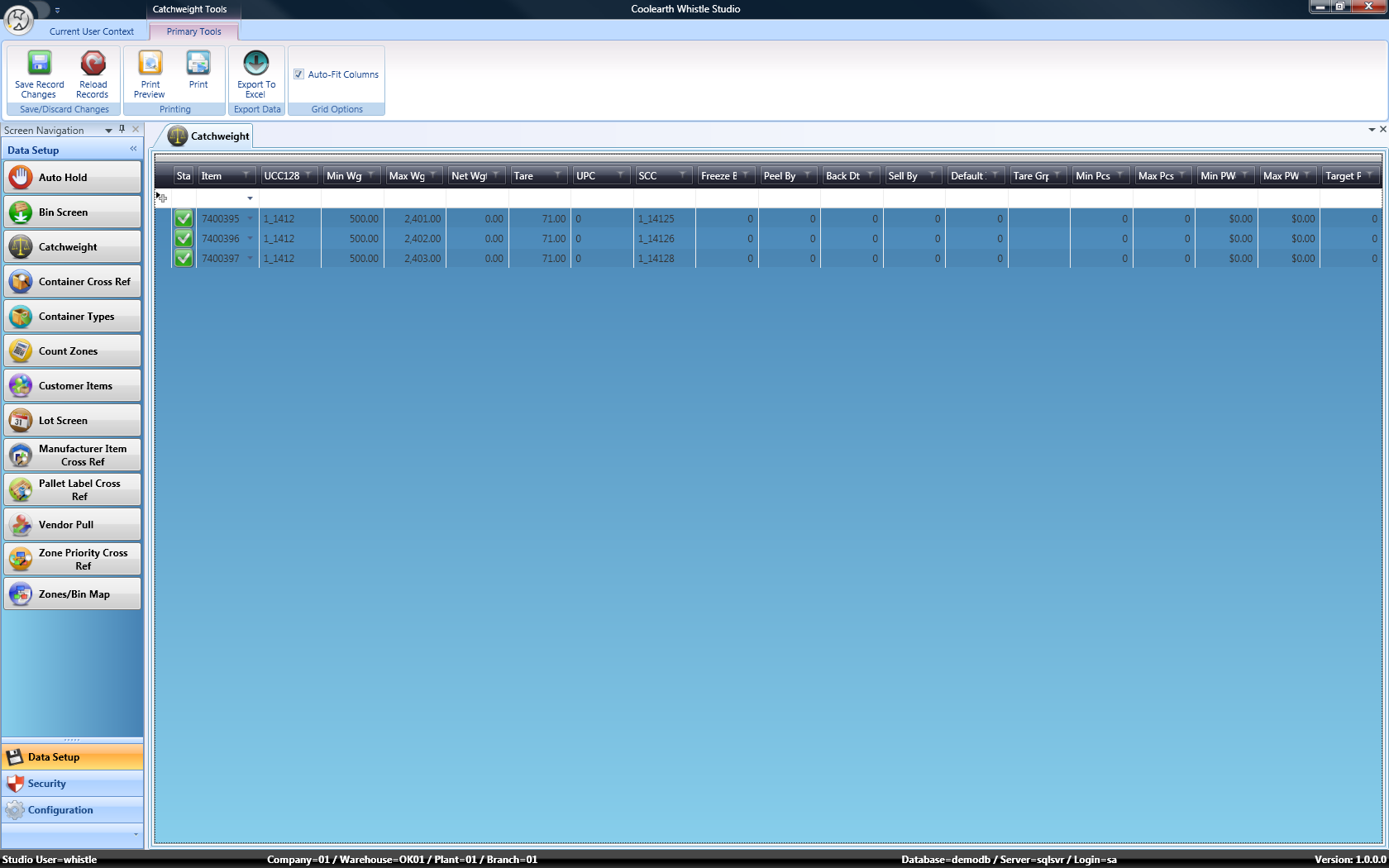GX:Studio:Catchweight
Contents
- 1 Intended Use
- 2 Example Usage
- 3 Columns
- 3.1 Item
- 3.2 UCC128
- 3.3 Min Wgt
- 3.4 Max Wgt
- 3.5 Net Wgt
- 3.6 Tare
- 3.7 UPC
- 3.8 SCC
- 3.9 Freeze By
- 3.10 Peel By
- 3.11 Back Dt
- 3.12 Sell By
- 3.13 Default Item
- 3.14 Tare Group
- 3.15 Min Pcs
- 3.16 Max Pcs
- 3.17 Min PWgt
- 3.18 Max PWgt
- 3.19 Target Pcs
- 3.20 ECOLotsOnly
- 3.21 caseTare
- 3.22 TargetPieces
- 3.23 MinPieceWeight
- 3.24 MaxPieceWeight
Intended Use
This screen is used to set up catchweighted items. A catchweight (also known as random weight) item is inventory where each piece can have a different weight, and the product is priced by the actual weight of the individual piece. In contrast, a standard weight (also known as net weight) item is one that uses the same (standardized) weight for each piece.
When using the Infor ERP system, an item is considered to be catchweight or random weight if:
1) the fill attribute column in the table in_itmpk_tbl contains a value of 2, and
2) the net weight column (wms_ctwght_netwt) in the table wms_ctwght_tbl is equal to 0.
An item is considered catchweight or randomeweight, but uses the same weight for each piece if:
1) the fill attribute column in the table in_itmpk_tbl contains a value of 2, and
2) the net weight column (wms_ctwght_netwt) in the table wms_ctwght_tbl is greater than 0.
Example Usage
New Item #23 is catchweighted, and Whistle needs to know the various weighs associated with the item.
Columns
Item
The item to be catchweighted.
UCC128
Unique item number.
Min Wgt
Minimum allowable weight of the item.
Max Wgt
Maximum allowable weight of the item.
Net Wgt
Net weight of the item.
Tare
Weight of packaging (such as a pallet) if its to be taken out of the weight.
UPC
SCC
Freeze By
Peel By
Back Dt
Sell By
Default Item
Tare Group
Min Pcs
Max Pcs
Min PWgt
Max PWgt
Target Pcs
ECOLotsOnly
caseTare
Tare weight of a case.
